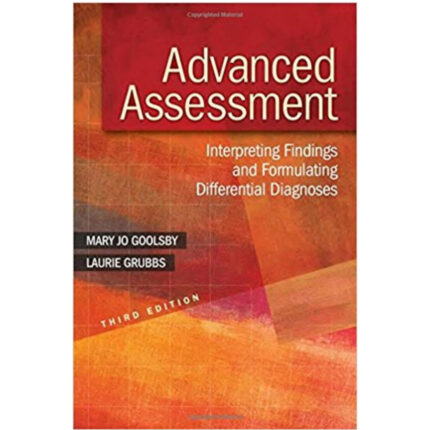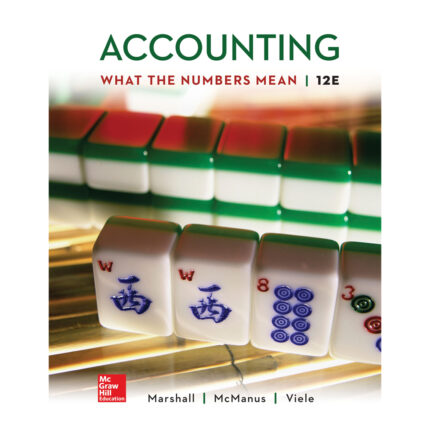Atrills Accounting For Business Students 1st Australian Edition By Atrill Mclaney – Test Bank
Chapter 11
Cost-volume-profit analysis
and relevant costing
Choose the one alternative that best completes the statement or answers the question.
1) How are fixed costs best defined?
A) As fixed in relation to changes in activity over the relevant range of output
B) As fixed for all time
C) As fixed for 6 months
D) As fixed for a given number of products
Answer: A
Difficulty: Basic
Learning Objective: 11.1 Distinguish between fixed costs and variable costs, and explain the importance of a detailed understanding of cost behaviour.
Topic: The behaviour of costs
AACSB: 3 Analytical thinking
2) Which of these would be considered a fixed cost?
A) Cost of fuel for a transport company
B) Laundry costs to wash towels used by a hairdresser
C) Insurance premium
D) Materials used in production
Answer: C
Difficulty: Basic
Learning Objective: 11.1 Distinguish between fixed costs and variable costs, and explain the importance of a detailed understanding of cost behaviour.
Topic: The behaviour of costs
AACSB: 8 Application of knowledge
3) How are fixed costs represented graphically?
A) A horizontal line, staying the same irrespective of the level of activity
B) Starting at zero and increasing as a straight line as activity increases
C) Starting at a given point and increasing as a straight line as activity increases
D) The intersection of the total costs and total revenue lines
Answer: A
Difficulty: Moderate
Learning Objective: 11.1 Distinguish between fixed costs and variable costs, and explain the importance of a detailed understanding of cost behaviour.
Topic: The behaviour of costs
AACSB: 3 Analytical thinking
4) Semi-fixed costs are best defined as:
A) having both fixed and variable elements.
B) varying over time.
C) costs ignored in cost-volume-profit analysis.
D) None of the above
Answer: A
Difficulty: Basic
Learning Objective: 11.1 Distinguish between fixed costs and variable costs, and explain the importance of a detailed understanding of cost behaviour.
Topic: The behaviour of costs
AACSB: 3 Analytical thinking
5) An example of a variable cost is:
A) manager’s salary.
B) local government rates.
C) rent.
D) cost of raw materials.
Answer: D
Difficulty: Basic
Learning Objective: 11.1 Distinguish between fixed costs and variable costs, and explain the importance of a detailed understanding of cost behaviour.
Topic: The behaviour of costs
AACSB: 8 Application of knowledge
6) Variable costs are best defined as:
A) varying from period to period.
B) varying directly in proportion to the number of employees.
C) varying directly in proportion to the level of activity.
D) varying over time.
Answer: C
Difficulty: Basic
Learning Objective: 11.1 Distinguish between fixed costs and variable costs, and explain the importance of a detailed understanding of cost behaviour..
Topic: The behaviour of costs
AACSB: 3 Analytical thinking
7) As output increases, variable costs per unit are:
A) semi-fixed.
B) constant.
C) variable.
D) proportional to total costs.
Answer: B
Difficulty: Moderate
Learning Objective: 11.1 Distinguish between fixed costs and variable costs, and explain the importance of a detailed understanding of cost behaviour.
Topic: The behaviour of costs
AACSB: 3 Analytical thinking
8) Variable costs are represented graphically as:
A) starting at zero and increasing as a straight line as activity increases.
B) starting at a given point and increasing as a straight line as activity increases.
C) a horizontal line, staying the same irrespective of the level of activity.
D) the intersection of total costs and total revenue lines.
Answer: A
Difficulty: Moderate
Learning Objective: 11.1 Distinguish between fixed costs and variable costs, and explain the importance of a detailed understanding of cost behaviour.
Topic: The behaviour of costs
AACSB: 3 Analytical thinking
9) Which of the following is an example of a semi-fixed (semi-variable) cost?
A) Cost of telephone calls.
B) Total telephone account, both calls and rental.
C) Cost of telephone rental.
D) None of the above
Answer: B
Difficulty: Moderate
Learning Objective: 11.1 Distinguish between fixed costs and variable costs, and explain the importance of a detailed understanding of cost behaviour.
Topic: The behaviour of costs
AACSB: 3 Analytical thinking
10) If total costs are $30 000 at an output of 3 000 units and $35 000 at an output of 3 500 units, variable costs per unit are:
A) $15 per unit.
B) $20 per unit.
C) $10 per unit.
D) $12 per unit.
Answer: C
Difficulty: Moderate
Learning Objective: 11.1 Distinguish between fixed costs and variable costs, and explain the importance of a detailed understanding of cost behaviour.
Topic: The behaviour of costs
AACSB: 3 Analytical thinking













Reviews
There are no reviews yet.